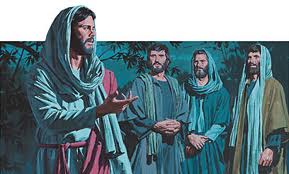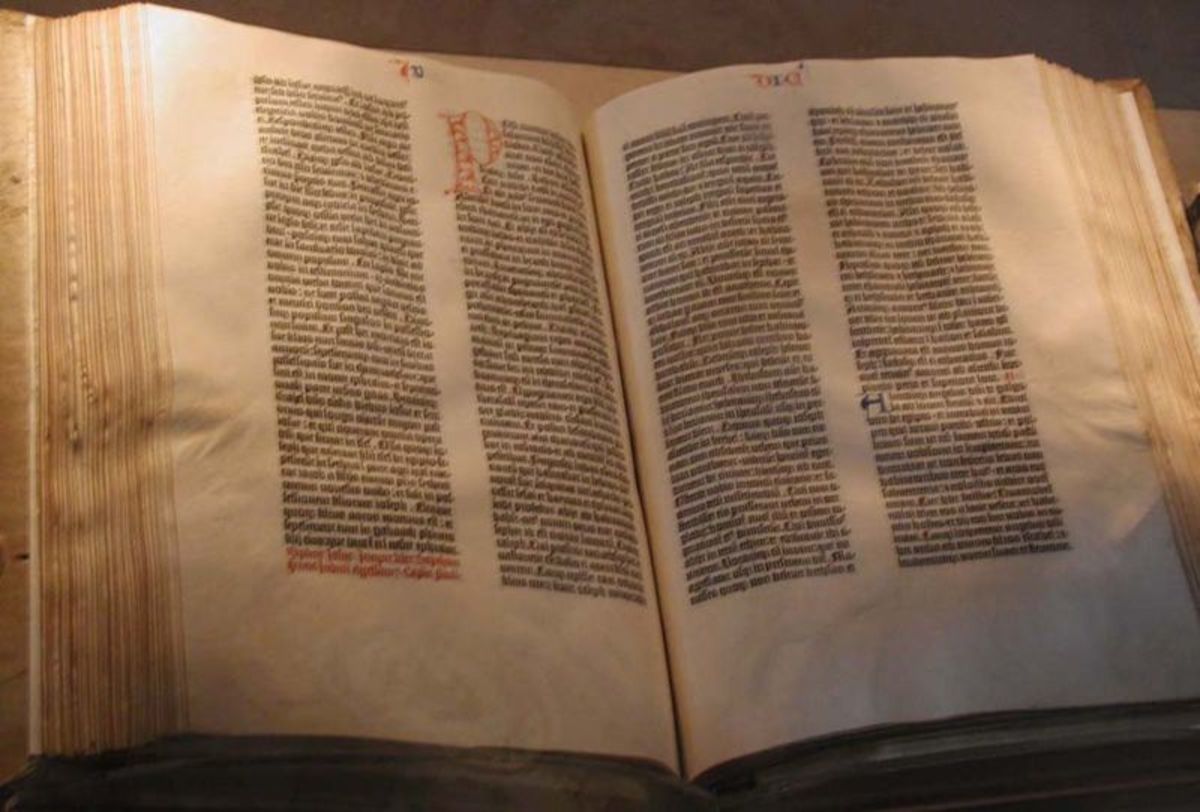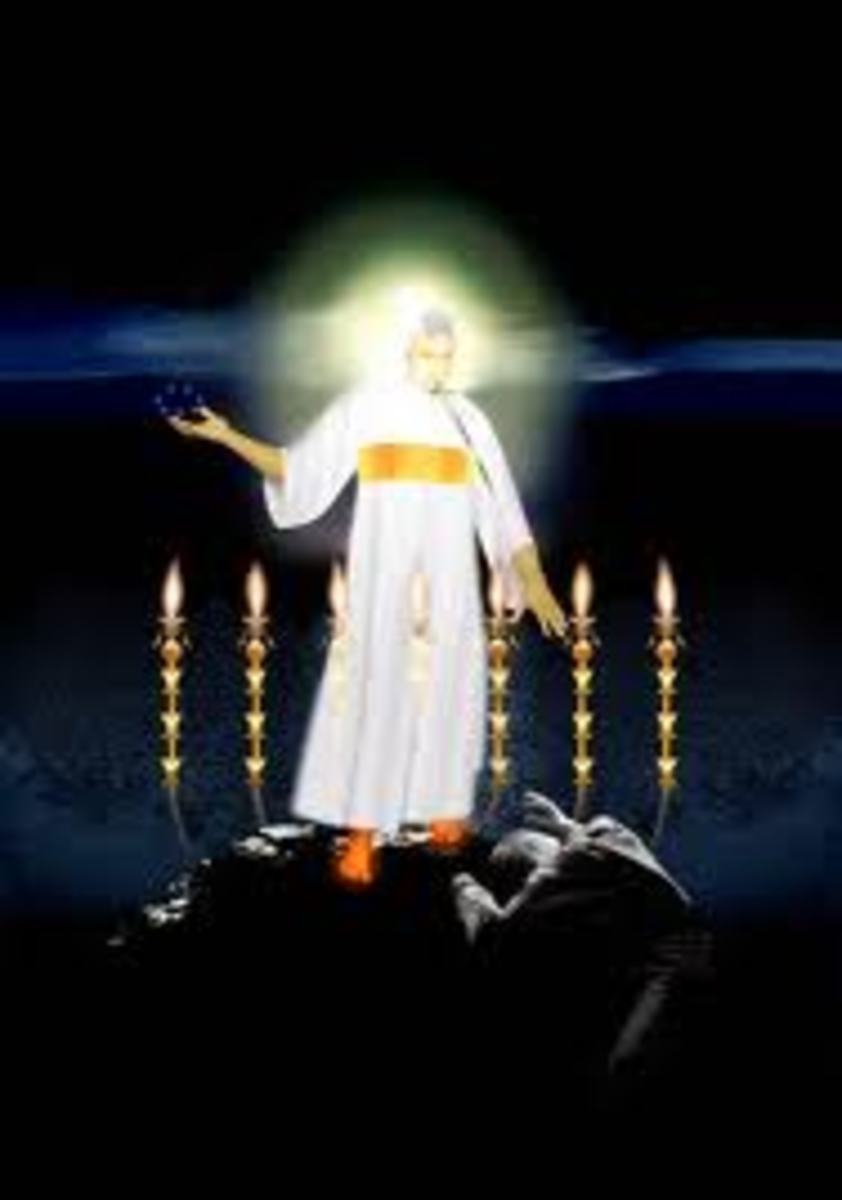Understanding the Question, A Study in Kingdom Theology

Referenced Texts
Daniel 9:24 “Seventy weeks are determined for your people and for your holy city, to finish the transgression, to make an end of sins, to make reconciliation for iniquity, to bring in everlasting righteousness, to seal up vision and prophecy, and to anoint the Most Holy.
Matthew 18:7 Woe to the world because of offenses! For offenses must come, but woe to that man by whom the offense comes!
Matthew 23:34-38 Therefore, indeed, I send you prophets, wise men, and scribes: some of them you will kill and crucify, and some of them you will scourge in your synagogues and persecute from city to city, 35 that on you may come all the righteous blood shed on the earth, from the blood of righteous Abel to the blood of Zechariah, son of Berechiah, whom you murdered between the temple and the altar. 36 Assuredly, I say to you, all these things will come upon this generation. 37 “O Jerusalem, Jerusalem, the one who kills the prophets and stones those who are sent to her! How often I wanted to gather your children together, as a hen gathers her chicks under her wings, but you were not willing! 38 See! Your house is left to you desolate;
Matthew 24:1 Then Jesus went out and departed from the temple, and His disciples came up to show Him the buildings of the temple.
Matthew 24:2 And Jesus said to them, “Do you not see all these things? Assuredly, I say to you, not one stone shall be left here upon another, that shall not be thrown down.”
Matthew 24:3 Now as He sat on the Mount of Olives, the disciples came to Him privately, saying, “Tell us, when will these things be? And what will be the sign of Your coming, and of the end of the age?”
Matthew 26:24 The Son of Man indeed goes just as it is written of Him, but woe to that man by whom the Son of Man is betrayed! It would have been good for that man if he had not been born.”
1 Thessalonians 4:13-18 But I would not have you to be ignorant, brethren, concerning them which are asleep, that ye sorrow not, even as others which have no hope. 14 For if we believe that Jesus died and rose again, even so them also which sleep in Jesus will God bring with him. 15 For this we say unto you by the word of the Lord, that we which are alive and remain unto the coming of the Lord shall not prevent them which are asleep. 16 For the Lord himself shall descend from heaven with a shout, with the voice of the archangel, and with the trump of God: and the dead in Christ shall rise first: 17 Then we which are alive and remain shall be caught up together with them in the clouds, to meet the Lord in the air: and so shall we ever be with the Lord. 18 Wherefore comfort one another with these words.
What Is The Question?
The subject matter of this paper is understanding the question, which is the genesis of the Olivet discourse of Christ, recorded in Matthew chapters 24 and 25.
"And as he set upon the Mount of Olives, the disciples came to him privately, saying, Tell us, when shall these things be? And what shall be the sign of thy coming, and of the end of the world?" (Matthew 24:3)
In our last visit we considered the meaning of the word “generation” as used by Jesus in Matthew 24:34. Having discovered the meaning to have been, the multitude of people living at the same time as did Jesus, we now turn our attention to the question Matthew 24 is answering. But, how may one arrive at the correct answer, if one does not understand the question?
To begin with, we must understand that Matthew wrote without dividing his Gospel into chapters and verses; these were added as a study aid much later in history. In order to understand chapters 24 and 25 one must consider chapter 23. An understanding of chapter 23 will help put the question asked Jesus, in the third verse of chapter 24, into proper context. (Thus, we apply the E2 model of interpretation.)
Chapter 23 is known as the “Woe” chapter. Eight times in chapter 23 Jesus addresses the religious leaders of Judaism by saying: “Woe unto you ...” (see for example verses 13, 14, 15, 16, 23, 25, 27, 29). The word “woe” is the Greek “ouai” and is the primary explanation of grief—such as: alas. One may get a feel of how “ouai” (Woe) was used in the vocabulary of Christ (as recorded by Matthew) by His use of the word when he addressed Chorazin and Bethsaida (Matthew 11:21); or when He laments the fate of the world, and the individuals in it (see Matthew 18:7); or, further, when He pronounces Judas Iscariot’s judgment (Matthew 26:24). In each case, extreme and total judgment is in view. One sees this clearly in verses 34-38 of chapter 23. In these verses Jesus sentences the Jewish generation, then living (see Matthew 23:35-38), to total destruction (see verses 37-38). According to Jesus, His generation would “fill ... up ... the measure of” (their) “fathers” (verse 32). Namely, they would bring to completion what had been measured. The words of Jesus reflect the notion that there was an allotted “measure” of iniquity that must be inflicted before bringing down divine judgment. When one looks to Daniel 9:24 where 70 weeks of years (i.e. 490 years) are determined upon the Jews, and on Jerusalem, “to make an end of sins” (Daniel 9:35-38), it becomes as clear as crystal that Jesus is (here) speaking of Daniel’s prophecy of the seventy weeks. (See especially Daniel 9:24.) This would mean that the judgment being pronounced by Christ, in this discourse, would satisfy the complete period covered by Daniel’s “Seventy Weeks,” prophecy. Jesus foretells a total judgment upon Jerusalem and the desolation of the house of God (verses 37-38).
Now, in the wake of the teaching of Jesus on the total destruction (of Judaism), His disciples object by pointing to the massive stones of the temple which suggests stability and permanence (see verse 24:1), as if to say, “Look at these buildings! How could this house ever be destroyed!?” (See 23:38). The response of Jesus is given in verse two: “There shall not be left here one stone upon another, they shall not be thrown down.” These words of Jesus are a reiterating of his previous statement in Matthew 23:37-38.
Matthew 23: 37-38. "O Jerusalem, Jerusalem, thou that killest the prophets, and stonest them which are sent unto thee, how often would I have gathered thy children together, even as a hen gathereth of her chickens under her wings, and ye would not? Behold, your house is left into you desolate."
By Matthew 24:3 the disciples are convinced of a very literal interpretation of the Temple’s destruction: they further understand that since the whole of Judaism’s system (political and religious) centered upon the Temple, it logically followed that the removal of the Temple meant the END of the Jewish age—as they knew it. So, they (the disciples) proceed to ascertain just WHEN the END (of the Jewish age) would come, by posing a three-part question to Jesus.
It is important to emphasize that the question of Matthew 24:3 is not three separate questions, as some postulate, but one question put into a triadic form.
The Question:
- “Tell us, when shall these things be?” Namely, the destruction of Jerusalem and the Temple (Matthew 23:37-38; 24:2).
- “What shall be the sign of thy coming?” Namely, His coming in judgment upon the house of Judaism (Matthew 24:37-39; 24:2).
- “And of the end of the world?” Namely, what would be the sign of the END of the present age that was being symbolized by the Temple (Matthew 23:38).
Only by understanding that this triadic question is asking about the judgment upon unbelieving Israel, are we able to understand the true meaning of the Olivet Discourse, given in Matthew chapters 24 and 25.

Trisecting the Question
A. “Tell us, when shall these things be? ∼ What things? Jesus had prophesied, in Matthew 23:34, that the leaders of the Jewish religion would kill the prophets, wise-men, and scribes that He would send them. Jesus said that they would crucify some, and some would be scourged (beaten) in the synagogues. Jesus also said that His followers would be persecuted by the Jews from city to city. Further, Jesus said, that because of this action they (His generation of the Jews) would “fill” up the pre-determined “measure” of sin required for the Lord to bring judgment. Further, that this judgment would mean the complete desolation of their “house,” i.e. the system and economy of Judaism (Matthew 23:37-38;24:2). Moreover, this rejection of unbelieving Israel would be indicated by the demolition of their temple. The disciples asked to know "WHEN" this judgment would come.
B. “What shall be the sign of thy coming?” ∼ The word for “coming” here is the Greek word “parousia” and means: an appearing. While this word is used for the physical (personal) return of Jesus, it also may be applied (as here) to a visible manifestation of Jesus’ activity—such as judgment. The word “parousia” is defined by James Strong (Strong’s #NT 3952) “a being near, i.e. advent (often: return; specifically of Christ to punish Jerusalem, or finally the wicked); (by implication) a physical aspect: -coming, presence.”
(To give an example of how the word “parousia” is used by the apostles to indicate an appearing of Christ in a coming judgment, I would offer 2 Peter 3:12 “Looking for and hasting unto the coming (parousia) of the day of the Lord, wherein the heavens being on fire shall be dissolved, and the elements shall melt with a fervent heat?) Some suppose that because the word “parousia” is used here by the disciples that they are asking about the Second Coming of Christ as described by Paul in 1 Thessalonians 4:13-18. However, this can hardly be the case since the Bible is clear that none of the disciples had yet acquired the understanding that Jesus would physically raise from the dead. As proof of this we should look to John 20:9, “For as yet they knew not the Scripture, that he must rise again from the dead.” The disciples asked about Jesus’ “parousia” (coming) the week before the crucifixion, but John assures us that on the morning of the resurrection neither he nor Peter (John 20:9) had the knowledge that Christ would physically rise from the dead. This information is all telling, in that Mark tells us the names of the four disciples who asked Jesus the question under discussion here. Two of the names Mark gives is Peter and John. Therefore, since neither Peter nor John had the understanding of a physically resurrected Christ, it is hardly possible that they are asking about the second physical coming here in Matthew chapter 24. What they are asking about is a spiritual presence of Jesus coming in a way that would “appear” before all men.
Moreover, this second part of the question asked about a “sign” of His coming. On the surface, the disciples seem to be asking for a sign that would make them aware that the happenings in the world were, indeed, His presence. Such a “sign” would hardly be needed if the disciples had a physical appearance of Jesus in mine. On the other hand, they may be asking for some event that will presage His advent in judgment on the unbelieving Jews. At any rate, they ask for a “sign.” In response to the request, Jesus told them to look for two things in particular:
- “The abomination of desolation, spoken of by Daniel the prophet” (24:15); which Jesus explained in Luke 21:20 as “Jerusalem compassed with armies;”
- The “sign” of the Son of Man in heaven.
(These signs will be dealt with in a future writing.)
C. "And the end of the world?" ∼ The “sign” that would mark His coming would also mark the “end of the world.” Now, the English word “world” (as it appears in the KJV) has caused a world of confusion on the whole end-time topic. (This is a classic illustration of the harm done by uneducated preachers and teachers who attempt to interpret God’s Word without the proper tools; i.e. a working knowledge of the language in which the Bible was written. The longer I live, the more I am convinced a sharp line needs to be drawn between preachers and teachers; teachers should be required to acquire the proper skills [academically] to “rightly divided” the Word of Truth.) The word “aionos” ( Strong’s # NT165) rendered in the KJV as “world” is actually “age.” So, the disciples are not asking about a “sign” for the end of the world, literally—this would have required the use of the Greek word “Kosmos” (Strong’s #NT2889)—they were asking about the END of the “age” (aionos). They were asking for a “sign” that would tell them when the END of the “age” had arrived; the “age” symbolized and represented by their magnificent temple.
Conclusion: Though a triadically phrased question, the disciples were asking for one thing: namely, “When is the judgment (on unbelieving Israel), which you foretold in Matthew 23:37-38, and 24:2, going to take place? What is the “sign” that will alert us to its arrival?”
Dear desciples, if, when studying Matthew 24, you view all that comes after verse three in the context just presented, the truth is evident. All doctrine is safe when guarded by context. Outside of context is only pretext.
The God of TRUTH illumine your souls; this is my prayer for you all.
Apostolically Speaking
☩ Jerry L Hayes
The Question and Jesus' Answer
Bishop's Other Kingdom Teachings
- The Nature of the Kingdom of God
The Kingdom of God. What is it? What is its make-up and nature. This article ventures into these questions. - The Millennial Reign of Christ
The subject under review in this writing is what is commonly called the “Millennial Reign of Christ.” The word “millennium” means: one thousand. but, is the 1,ooo yrs literal or figurative. - Revelation’s Warnings Of Imminence
We continue our study of Kingdom theology by reviewing Revelation's quadruple warnings of imminent fulfillment. The challenge to futurism is glaring. - The Crux of the Matter (A Kingdom Teaching)
It is amazing how much turns on the interpretation of the word "generation" as used by Jesus in Mt 24:34. In this writing we will explore what Jesus meant by "generation;" the crux of the matter. - Daniel's Kingdom of the Son of Man
Our article deals with the Kingdom of the Son of Man as presented by the prophet Daniel. - The Kingdom Teachings of Jesus, Part IV (The Coming of the Son of Man)
This 4th in a series of Kingdom Teachings of Jesus examines Mt 16:27-28; in particular the statement concerning some of His hears being alive when He returned with the holy Angels. - The Kingdom Teachings of Jesus, Part III
Part III of the Kingdom teachings of Jesus looks at Mt 13, called "The Kingdom Chapter." Here, Jesus teaches 7 kingdom parables. The students of ecclesiology, and eschatology can not ignore this ch. - The Kingdom Teachings of Jesus, Part II
In this article several passages from the Gospel of Matthew are reviewed in regard to the Kingdom teachings of Christ. Matthew writes to inform his readers that Jesus established the throne of David. - The Kingdom Teachings of Jesus, Part I
This article begins a series on the Kingdom teachings of Jesus. Here we look to Christ's own words concerning the Messianic Kingdom, its nature and particulars. - "Malachi's Eucharistic Prophecy"
This article continues the narrative concerning the OT prophet's writing about the church age. This paper reviews the prophet Malachi's prophecy of the universal celebration of the Eucharist. - Christ's Church Is The Tabernacle of David
The prophets of the OT foresaw the Church; Amos spoke of it in terms of the Tabernacle of David being rebuild. James, the Lord's half brother, saw this in the Spirit and proclaimed it to be so. - “Joel’s Messianic Age, the Church of Jesus Christ”
When the Prophet Joel wrote of the messianic age he had the Church age in view. This article is continuing the narrative of how the prophets foresaw the Lord's church. - God's New Covenant With Israel
The purpose of the writing is to show the event of Calvary to be the cutting of God's promised New Covenant with Israel, thus demonstrating the Church to actually be the Israel of promise. - Did the Prophets Write of the Church?
It is argued by dispensationalist that the OT prophets did not see the Church in their prophecies. In this view the OT prophecies only pertain to Jews. This article challenges that position. - The Nature of the Kingdom of God
The Kingdom of God. What is it? What is its make-up and nature. This article ventures into these questions. - The Literary Form of the Book of Revelation
This article reveals the literary form of the book of Revelation. Such information goes a long way in helping the Bible student grasp the knowledge offered by this great book. - The Key to the Book of Revelation
So much depends on the order of sequence for the visions of Revelation that this question must be settled before any progress can be made is understand this all importunity manuscript.









